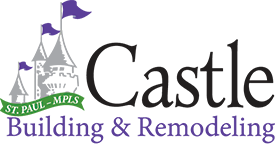Remodeling your Home can Affect your Indoor Air Quality
In Door Air Quality
In the past several years, a growing body of scientific evidence has indicated that the air within homes and other buildings can be more seriously polluted than the outdoor air in even the largest and most industrialized cities. The levels of pollution from any one individual source by itself may not pose a significant risk to your health, but most homes have more than one source of pollution that contributes to indoor air quality. When you combine that knowledge with the fact that most people spend 80-90% of their time indoors, you are looking at a potentially serious problem.
Indoor air quality problems are caused by a combination of indoor pollution sources and inadequate ventilation. Indoor pollution sources can include particles like mold spores, animal dander, and particulates from cooking or tobacco smoke. Gases such as radon, carbon monoxide, and formaldehyde, as well as aerosol sprays, emissions from building materials, paints, and cleaning chemicals can also contribute to indoor pollution. Many of these are quite common in homes, and they are usually not a problem if the home is adequately ventilated.
The American Society of Heating, Refrigerating, and Air Conditioning Engineers recommends a ventilation rate of 0.35 ach (air changes per hour) for your home. This means that 35% of the air in your home is replaced every hour, or that the air is completely replaced about every three hours. Unfortunately, many homes do not get even half this level of ventilation. If too little outdoor air enters a home, pollutants can accumulate to levels that can pose negative health effects.
Remodeling your home provides you the opportunity for improving indoor air conditions. However, it can also bring exposure to higher levels of indoor air contaminants if careful attention is not given to potential pollution sources and the air exchange rate. Remodeling itself is often stinky, dusty, and messy, but this can be minimized by workers following practices to keep dust and fumes out of living spaces. Express your concerns about indoor air quality to your remodeling contractor and enlist the team’s cooperation in taking measures to provide good indoor air quality. Talk both about purchasing building materials and furnishings that are low-emitting and about providing an adequate amount of ventilation to the work area. You and your remodeling contractor can work together to improve the air quality in your home – both during your remodeling project and into the future.
Exhaust Ventilation
Providing a mechanized exhaust system in your home such as a bath fan, stove hood exhaust, or kitchen exhaust fan can drastically improve the rate of air exchanges in your home and improve the air quality in your home.
Here are several tips to consider when running your bathroom exhaust fan to minimize issues or water damage.
– Always run your exhaust fan when showering or bathing. Hot and steamy showers can put a lot of moisture into the air. If proper ventilation does not exist this water will seep into the Indoor Air Quality / Exhaust Ventilation © Copyright 2007 Castle Building & Remodeling, Inc. All Rights Reserved. drywall or plaster and can eventually lead to pealing paint or worse mold in the walls or ceiling. The signs are almost never visible until it is too late.
– Run your exhaust fan for 15-20 minutes after completing your shower/bath. Although most of the moisture can be removed from the air the system needs to run additional time to remove the accumulated moisture from the vent piping that exits through the roof or side wall. If the fan is cut off prematurely and there is significant moisture build up remaining in the ducting the moisture can freeze in place due to the temperature differential in your attic and then drip back into the bathroom when the attic gets above freezing.
– If you are concerned about leaving the bath exhaust fan on all day consider getting a timer switch for the fan that will turn off automatically. The switches are inexpensive and easy to install.
Here are several tips to consider when running your hood or kitchen exhaust fan to minimize issues or water damage.
– Always run your exhaust hood when boiling water. Boiling water can put a lot of moisture into the air.
– Run your hood exhaust fan for 15-20 minutes after completing your cooking or boiling of water. Although most of the moisture can be removed from the air the system needs to run additional time to remove the accumulated moisture from the vent piping that exits through the roof or side wall. If the fan is cut off prematurely and there is significant moisture build up remaining in the ducting or on the flaps the moisture can freeze in place or the flaps can freeze open allowing cold air to come back into your home.
– Note: It is quite common to feel cold air or a slight draft at your hood vent. This is one of the least insulated places in the house as there is often a direct show to the exterior with just a screen and set of vent flaps stopping cold air from entering your home.

